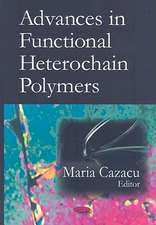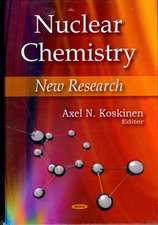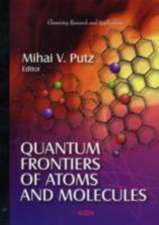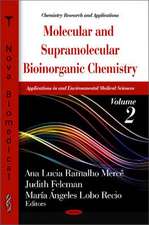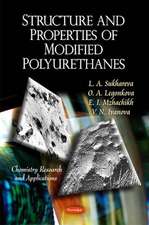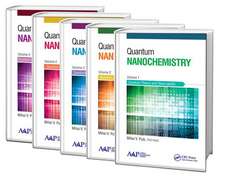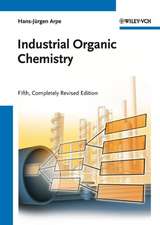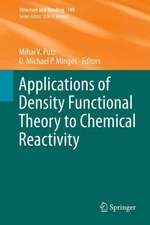Advances in Chemical Modeling
en Limba Engleză Hardback – 31 mai 2015
| Toate formatele și edițiile | Preț | Express |
|---|---|---|
| Hardback (6) | 1358.26 lei 3-5 săpt. | |
| Nova Science Publishers Inc – 30 noi 2012 | 1358.26 lei 3-5 săpt. | |
| Nova Science Publishers Inc – 30 sep 2013 | 1410.34 lei 3-5 săpt. | |
| Nova Science Publishers Inc – 20 sep 2011 | 1626.32 lei 3-5 săpt. | |
| Nova Science Publishers Inc – 31 mai 2015 | 1707.45 lei 3-5 săpt. | |
| Nova Science Publishers Inc – apr 2016 | 1893.42 lei 3-5 săpt. | |
| Nova Science Publishers Inc – 22 noi 2011 | 1938.16 lei 3-5 săpt. |
Preț: 1707.45 lei
Preț vechi: 2188.68 lei
-22% Nou
Puncte Express: 2561
Preț estimativ în valută:
326.77€ • 338.55$ • 272.71£
326.77€ • 338.55$ • 272.71£
Carte disponibilă
Livrare economică 01-15 martie
Preluare comenzi: 021 569.72.76
Specificații
ISBN-13: 9781634823104
ISBN-10: 1634823109
Pagini: 425
Dimensiuni: 180 x 260 x 32 mm
Greutate: 1.09 kg
Editura: Nova Science Publishers Inc
ISBN-10: 1634823109
Pagini: 425
Dimensiuni: 180 x 260 x 32 mm
Greutate: 1.09 kg
Editura: Nova Science Publishers Inc
Cuprins
Preface; From Kohn-Sham to Gross-Pitaevsky Equation within Bose-Einstein Condensation psi-Theory; Generalizing the McClelland & Koolen-Moulton Inequalities for Total pi-Electron Energy; Internuclear Separations Using Least Squares & Neural Networks for 46 New Main-group Diatomics; Normalization of Atomic Space Based on the Six Dimensional Cuboctahedron; The Algebraic Chemistry of Electronegativity; The Correlation of the Variation of the Chemical Reactivity & Site Selectivity of Benzene, Naphthalene & Azulene in Terms of Density Functional Descriptors; Theoretical Study on Ground & Excited States of 3,5-diacetyl-1,4- dihydrolutidine; Computational Study of Excited-State Intramolecular-Proton-Transfer of o-Hydroxybenzaldehyde, o-Formyl-Substituted Phenols, & 5-Substituted Salicylaldehydes; Heptahapticity in Binuclear Cycloheptatrienyltungsten Carbonyl Derivatives: Comparison with the Chromium & Molybdenum Analogues; Moment of Inertia of Chiral Molecules as a Parameter for Calculating Specific Rotation: Conformational Effects in 2-Substituted Butanes; Theoretical Study of Nucleophilic Behaviour of 3,4-Dioxa-7-thia-cyclopenta[a]pentalene & 3,7-Dioxa-4-thia-cyclopenta[a]pentalene using ab intio & DFT-based Reactivity Descriptors; Theoretical Study of 1, 3-Dipolar Cycloadditions of Phenyl Azide with Different Olefins Using DFT-based Reactivity Indexes; Spin Transition under Influence of Pressure; Detection & Structure of [(LiClO4)2Li]+ in Gas Phase. Smallest Triple Stranded Helix; An Elliptic Model for Detonation Velocity; Detonation Velocity A Molecular Aspect; Kinetics & Mechanism of the Thermal Decomposition Reaction of 3,6-diphenyl-1,2,3,5-tetroxane in Solution; Modeling of Ethylene Polymerization with Zirconocene Catalyst & Estimation of Kinetic Parameters using Differential Evolution Algorithm; Topological Study of Schwarzitic Junctions in 1D Lattices; All-Pentagonal Face Nano-Dendrimer & Related Structures; Graphs with Minimal Value of Wiener & Szeged Number; Overlap Topologies Determining the Predominant Routes of Electrophilic & Nucleophilic Reactions; Topological Property of Fullerenes with Exactly 50 + 10n Carbon Atoms; New Version of Atom-Bond Connectivity Index of TurC4C8(S) Nanotube; Modeling & Simulation of a Urea-Spray for Automotive Urea-SCR Applications; Insight into Protein-Backbone H-bonds Contribution to Energetic of Protein-Peptide Binding; Amino Acid Distribution in Transmembrane Regions: A Statistical Analysis & Comparison with Globular Proteins; New Approach in Drug Delivery Systems; Correlation of the Drug Activities & Identification of the Reactive Sites in the Structure of Some Anti-Tubuculour Juglone Derivatives in Terms of the Molecular Orbital & the Density Functional Descriptors; Modeling Chlorinated Polycyclic Aromatic Hydrocarbons (Cl-PAH) Eco- & Toxicology by QSAR-OECD ToolBox Facility; Should We Worry about the Earths Calculated Warming at 0.7 degrees C over the Last 100 Years when the Observed Daily Variations over the Last 161 Years Can Be as High as 24 degrees C; Modeling Eastern Adriatic Photochemical Pollution; Modeling Sulfuric Acid Molecule with Elastic Spheres; Combinatorial Models of Polymers Subject to a Force; Zeolites: Geometry & Combinatorics; An Algorithm for Computing Atomic Size Incorporating the Relativistic Effect; Comments on a Graph Model Related to Chemistry; Organizing Principles & Gaps in the Periodic Table: Do We Find Manifestations of Convenience, Anthropocentrism, or Folksonomy; Batalin-Fradkin-Tyutin Approach of U(1) Massive Boson in Non−Commutative Space; Index.



